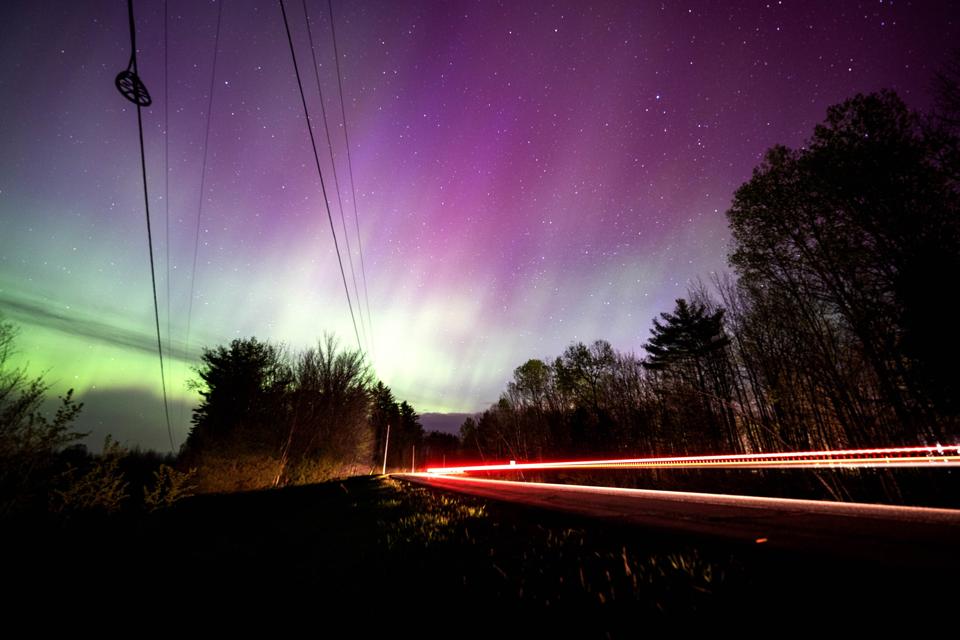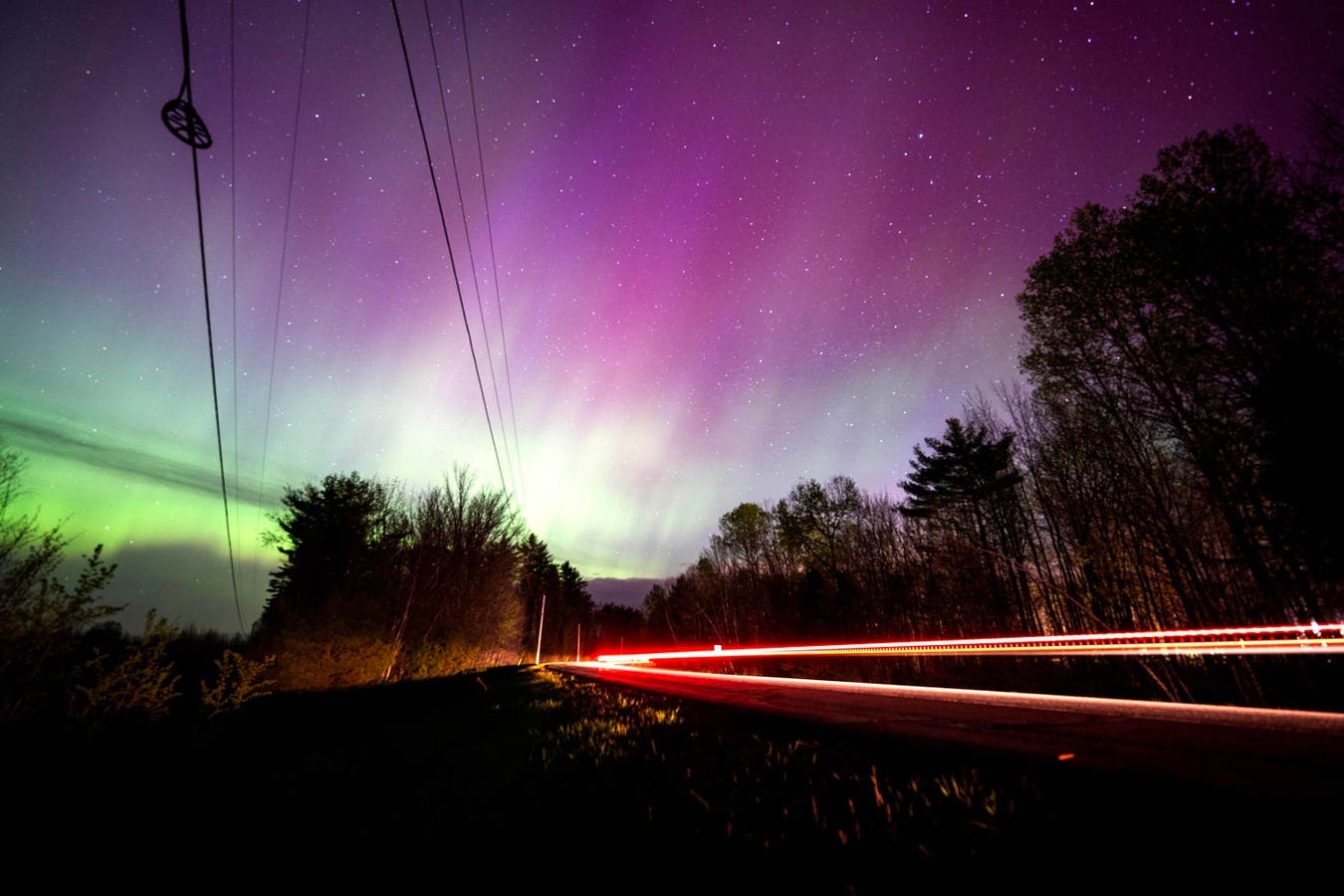
A car drives west on Mercer Road as the northern lights fill the sky over the rural landscape in Mercer, Maine on May 10, 2024. (Photo by Michael Seamans/Getty Images)
Getty Images
The Northern Lights may be seen across 12 northern U.S. states and Canada as soon as it gets dark on Sunday, Oct. 12 and into the early hours of Monday, Oct. 13, 2025, according to a forecast of a geomagnetic storm from the National Oceanic and Atmospheric Administration’s Space Weather Prediction Center (SWPC). It follows a similar prediction for Saturday, Oct. 11.
The forecast comes at the same time as two comets are visible, solar activity is close to a 23-year high due to the ongoing solar maximum and late-September’s equinox connects the magnetic fields of the sun and Earth, increasing the chances of a geomagnetic storm.
Northern Lights Tonight: What To Expect
The upgraded forecast calls for a G1-rated geomagnetic storm on Sunday, Oct. 12 could push the auroral oval farther south than usual — making this an alert worth watching.
“The geomagnetic field is likely to reach active to G1 (Minor) storm
levels over 11-13 Oct due to the onset of a recurrent, negative polarity CH
HSS,” states NOAA. That means a fast solar wind flowing out of a hole in the sun’s outer atmosphere — the corona — which raises the chance of auroras. The geomagnetic storm will begin when Earth enters a high-speed stream of solar wind, according to Spaceweather.com.
Northern Lights Forecast: Where And When
NOAA’s latest aurora viewlines indicate that aurora displays are a possibility in northern U.S. states and Canada, with 12 U.S. states having a chance after dark on Oct. 12.
U.S. states that may see aurora include Alaska and (northerly parts of) Washington, Idaho, Montana, Wyoming, North Dakota, South Dakota, Minnesota, Wisconsin, Michigan, New York and Maine.
NOAA’s aurora viewline for Sunday, Oct. 12, 2025.
NOAANorthern Lights Alert: Latest Updates
All forecasts for the aurora must be treated with caution. To check visibility in real time, use NOAA’s 30-minute aurora forecast, or download apps such as Aurora Now, My Aurora Forecast or Glendale Aurora for up-to-the-minute alerts and live solar wind data.
Aurora-chasers frequently use the Kp index to predict the intensity of a geomagnetic storm, but for aurora displays, the interplanetary magnetic field’s Bz component is more important (you’ll find it in some of the above apps and on SpaceWeatherLive.com).
Bz determines how easily solar energy enters Earth’s magnetosphere. When Bz points north, Earth’s field resists it; when Bz swings south, the two fields connect, allowing plasma to stream in. A sustained southward Bz of −5 nT or stronger usually signals an imminent display of aurora.
What Causes The Northern Lights
The solar wind causes the Northern Lights — streams of charged particles flowing from the sun and interacting with Earth’s magnetic field. While most are deflected, some particles spiral along magnetic field lines toward the poles, colliding with oxygen and nitrogen atoms high in the atmosphere. These collisions excite the gases, causing them to release energy as shimmering light.
Even weak solar storms can produce bright auroras when conditions are just right. Around the equinoxes in March and September, Earth’s magnetic field tilts into a more favorable orientation, allowing solar particles to interact more effectively with the magnetosphere. This alignment, known as the Russell-McPherron effect, dramatically increases the likelihood of geomagnetic storms in the few weeks either side of each equinox.
Wishing you clear skies and wide eyes.

